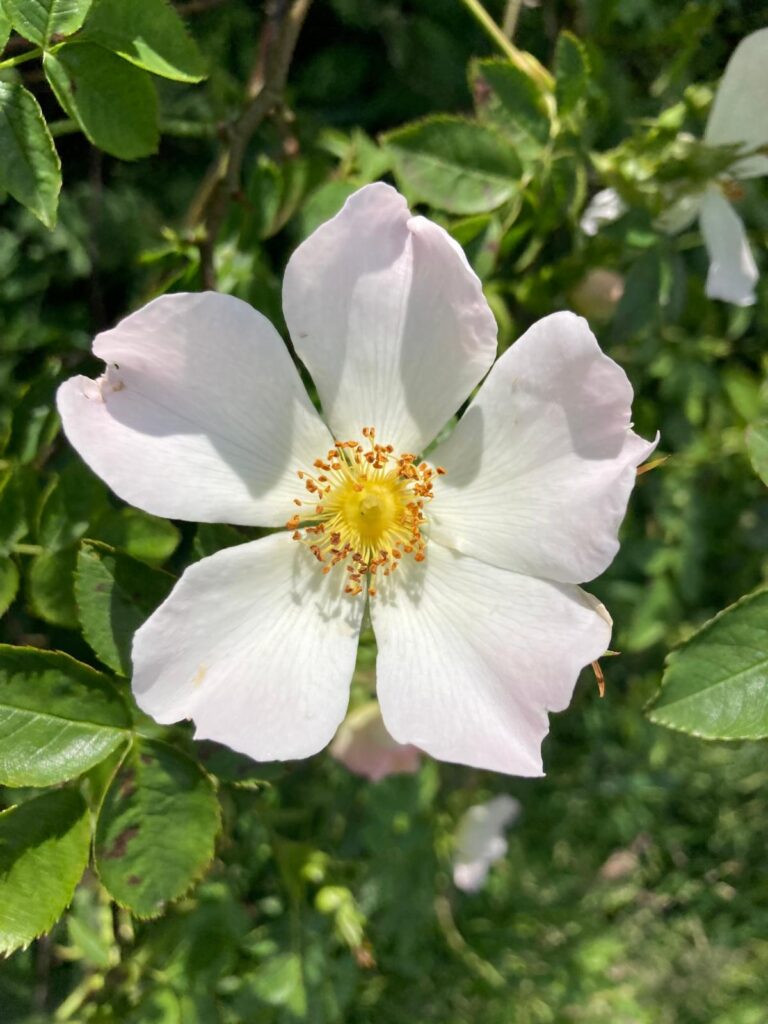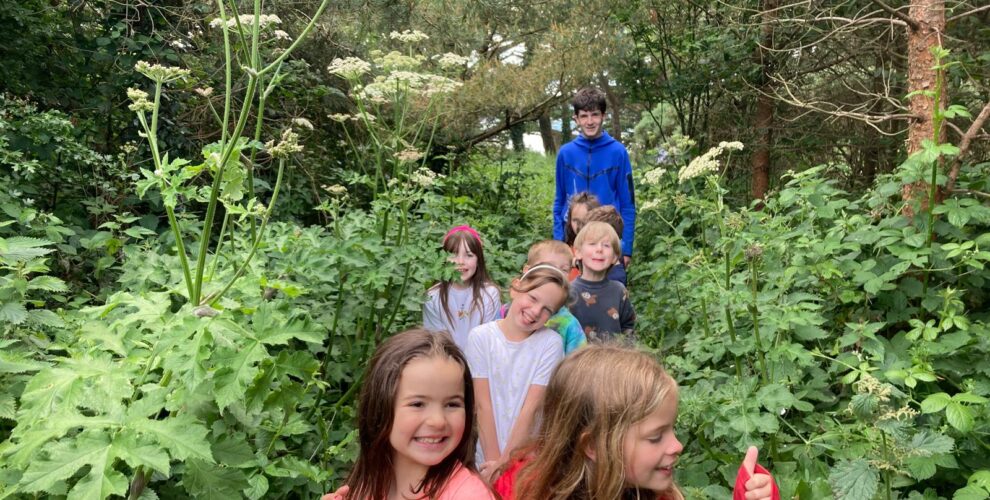Getting to know Common Hogweed
This week we were noticing and exploring Common Hogweed. We smelled it. We looked closely. We asked questions. We drew it. We didn’t touch it though as its sap can irritate some people’s skin. Hogweed’s flowers are pollinator’s friends. The towering umbels give a rich source of nectar for bees, butterflies and other insects.
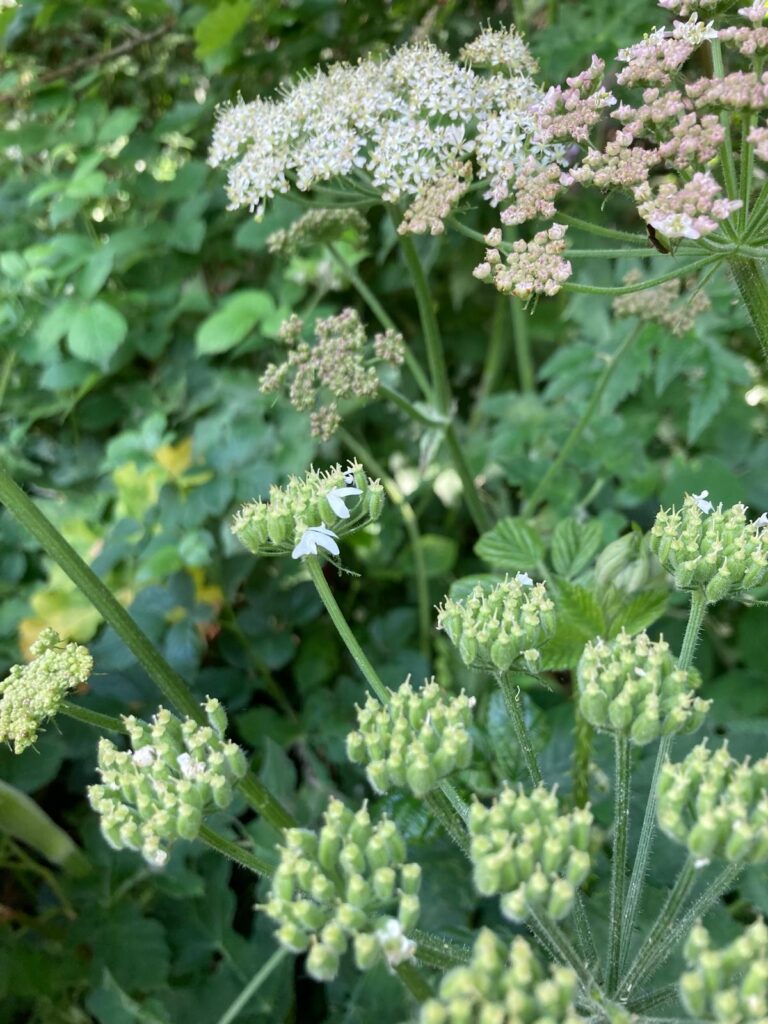
We had a letter via Grandmother tree from Common Hogweed.
‘We are the flowers with umbrella-shaped stalks made up of many tiny flowers held on short flower stalks that gives us that lacy look. We can’t boast of having a lovely smell and taste like
elderflower but notice my thick handsome hairy stalk and my large pods that protect my leaves and flowers until they are strong and ready to meet the sun.‘
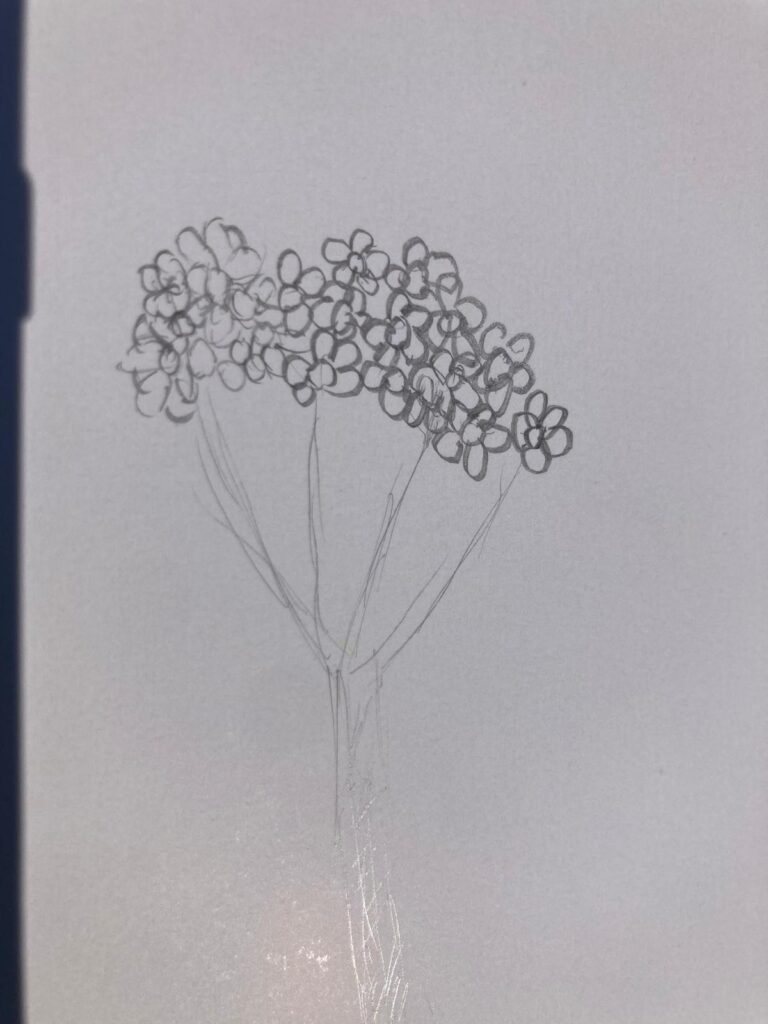
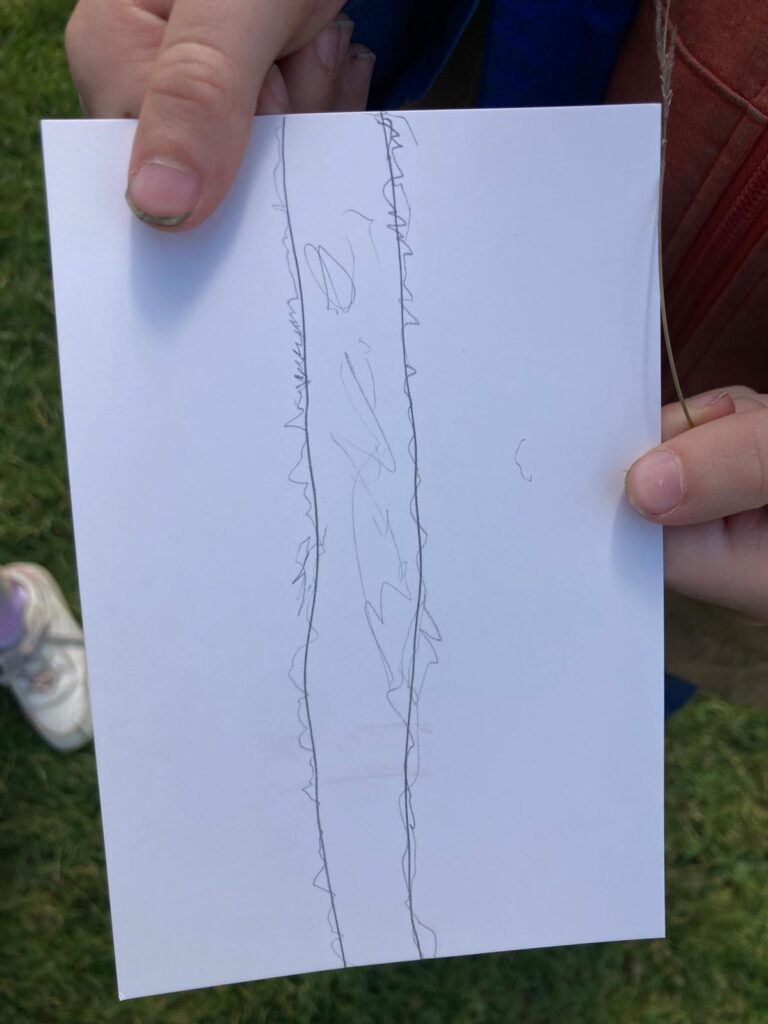

The children also enjoyed running and playing hide and seek in the long meadow grass.
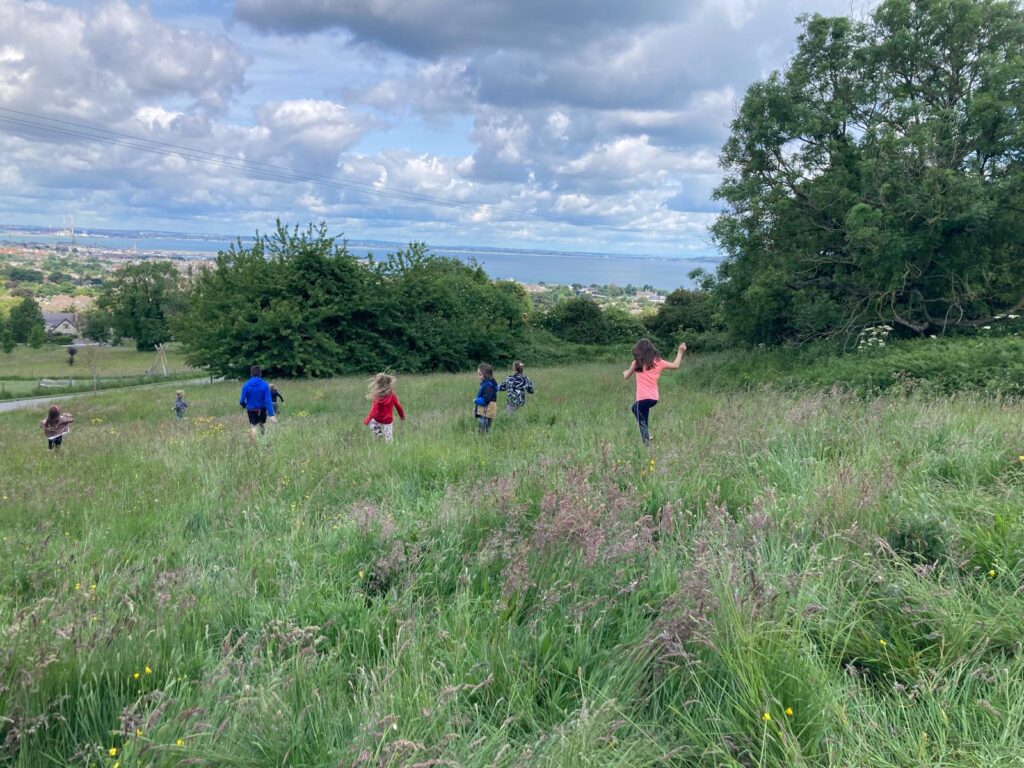
Playing and learning – problem solving, planning, creating, collaborating
When we got to base camp some children continued drawing.
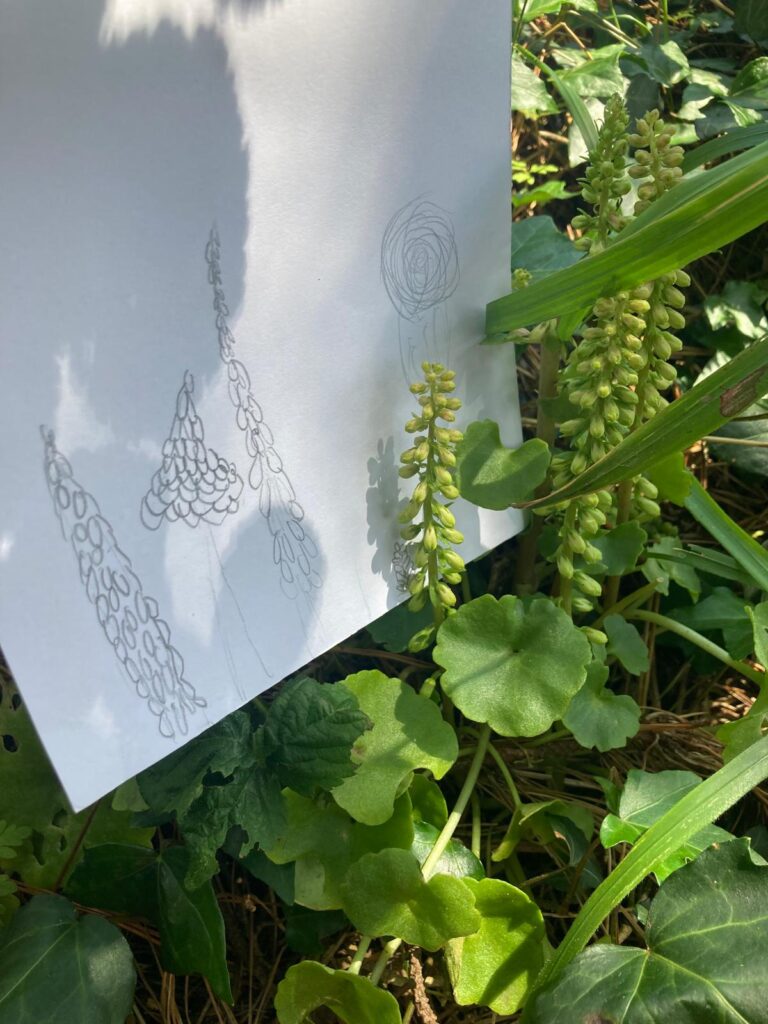
Another child had ideas for his base camp and had drawn meticulous plans for what to do and how to do it and so got to work immediately.
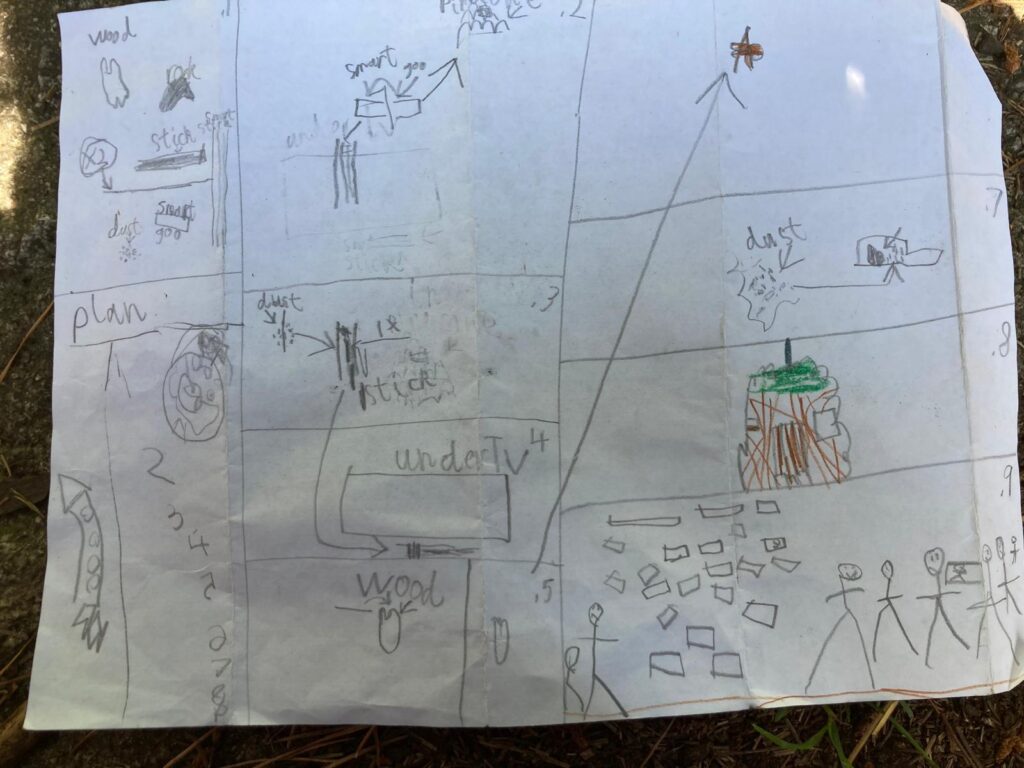
Other were busy playing a game where one boy needed a way of holding a stick. ‘I need something to hold my stick onto me.’ Instead of offering a solution, I asked him, ‘What do you think would work?’ He thought for a minute and then with a lighting up of his face, he pronounced, ‘Stickyweed’ and ran off to sort out a solution for himself.
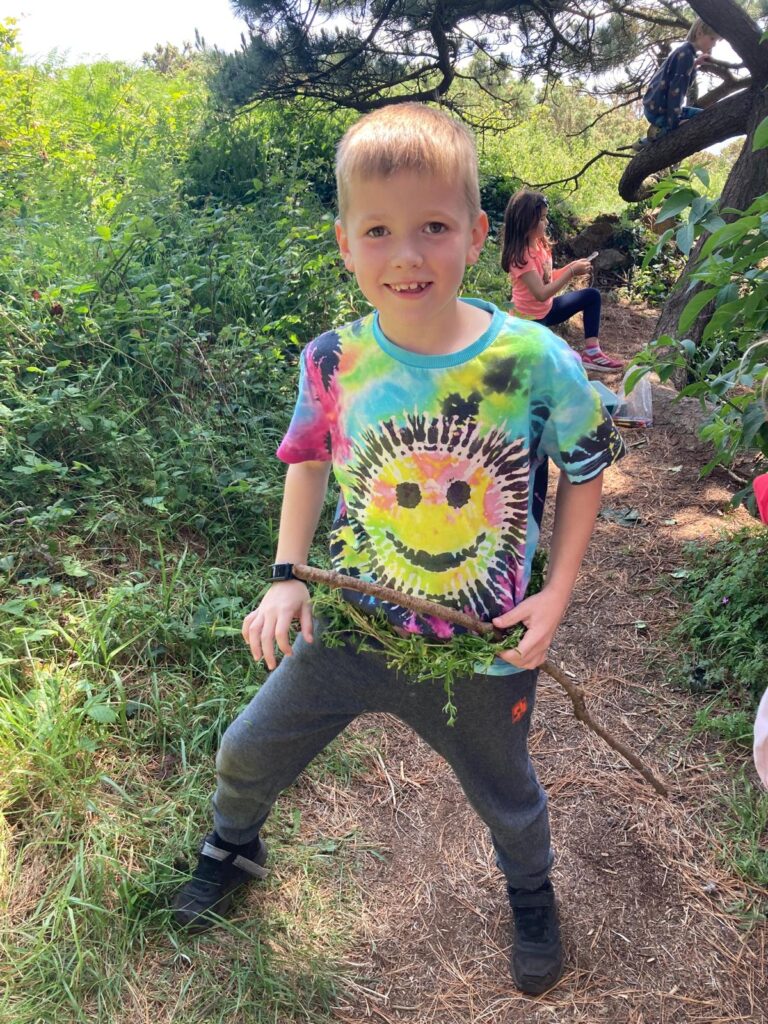
Exploring
We then went up to the top of the hill to see if we could find our new neighbours, the old Irish goats. They arrived the day before and were just settling into their new location where it is hoped they will help increase biodiversity and reduce fire risk by their managed grazing of gorse.
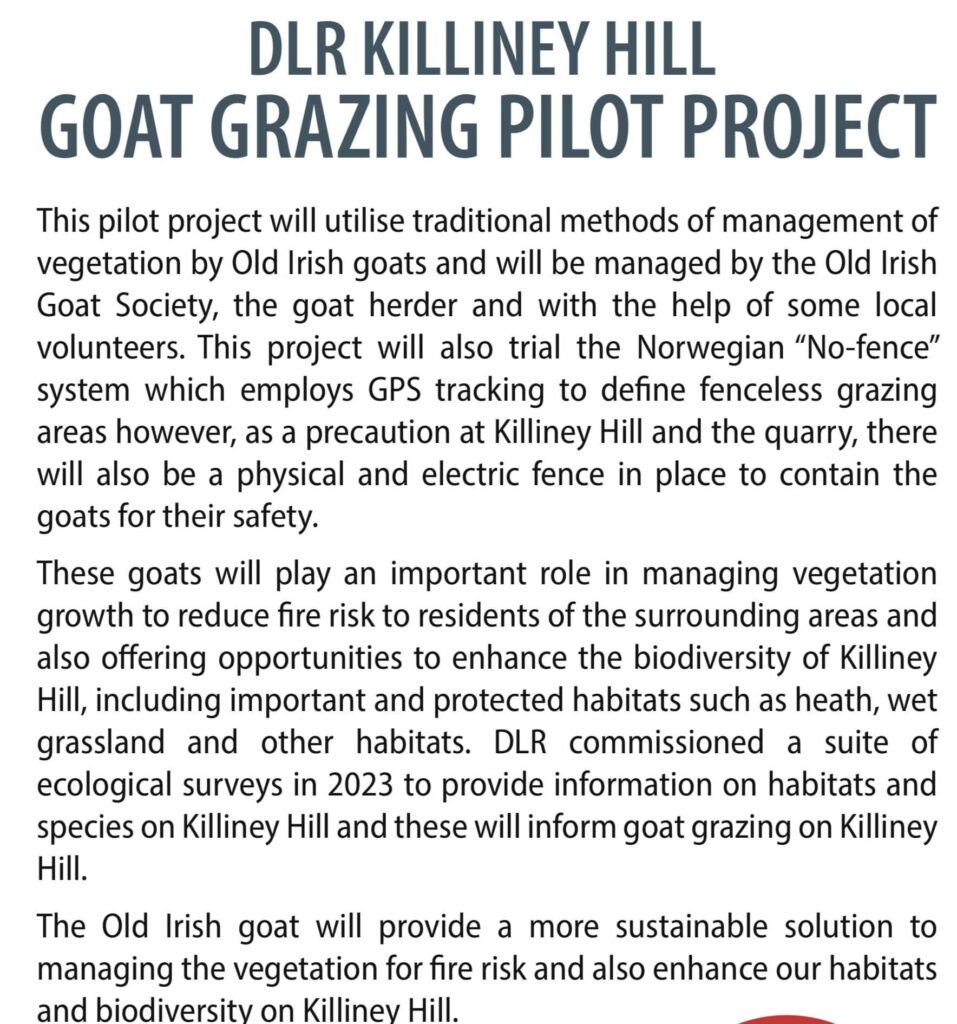
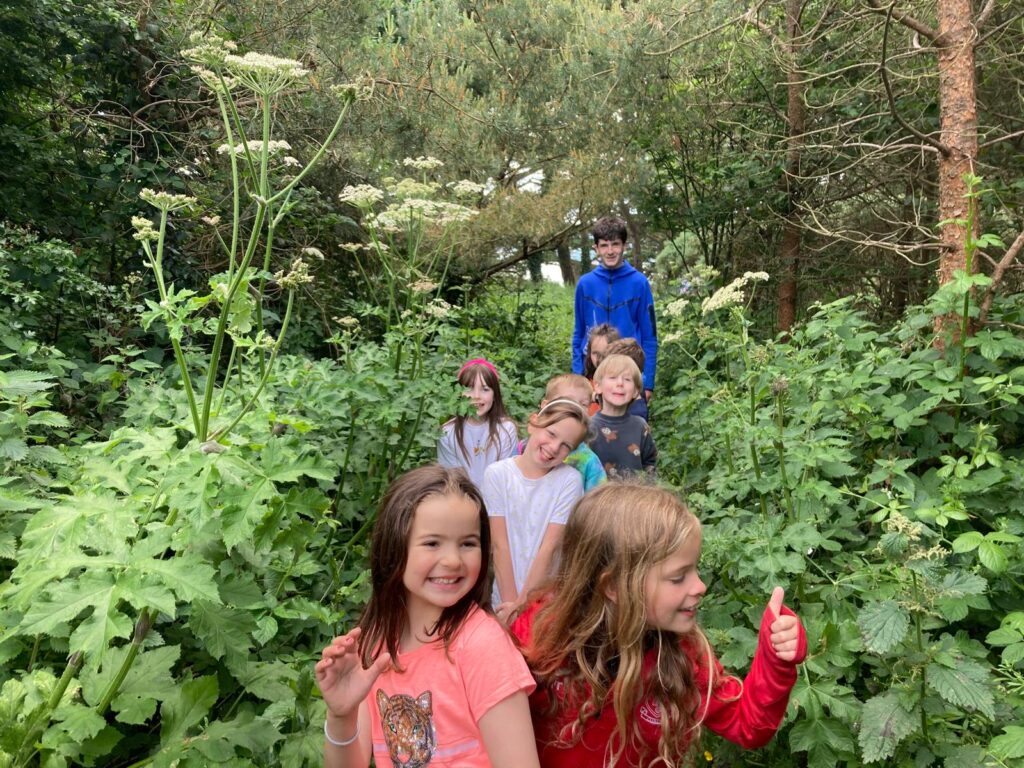
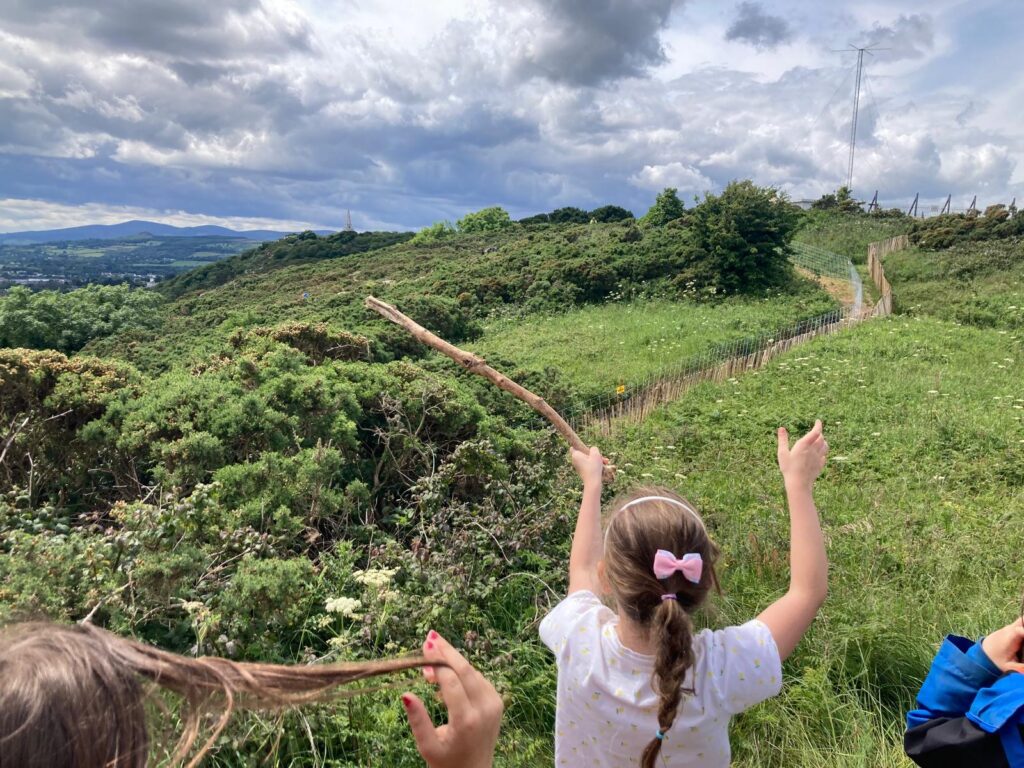
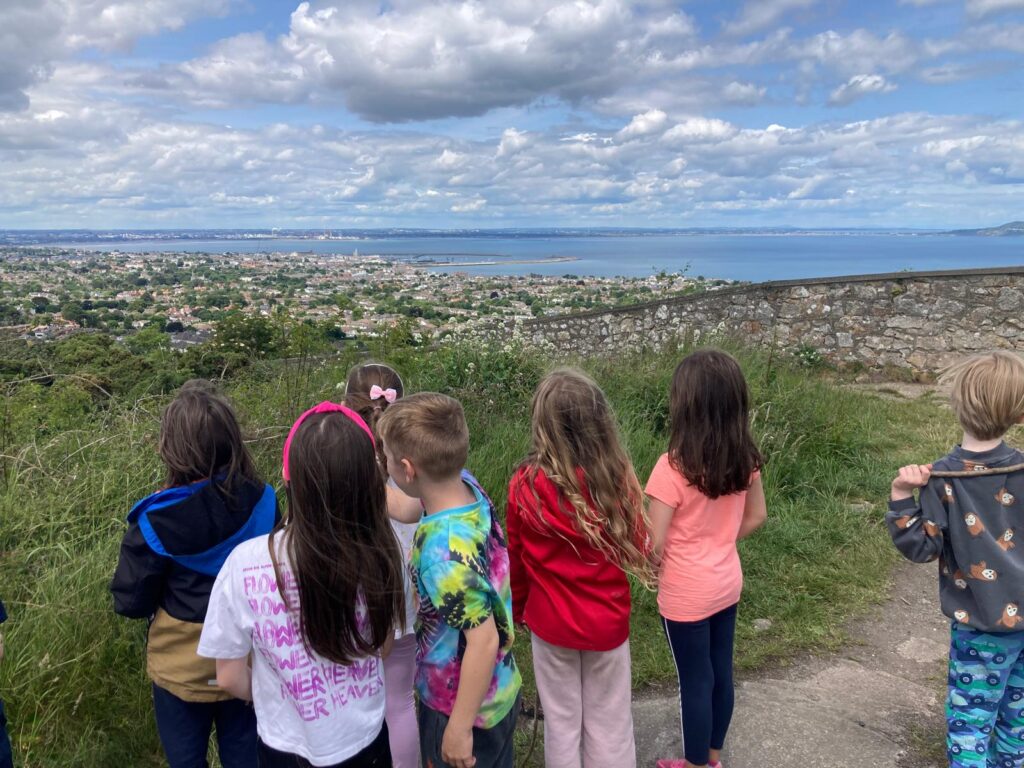
Once in a new place, the children wanted to explore more.
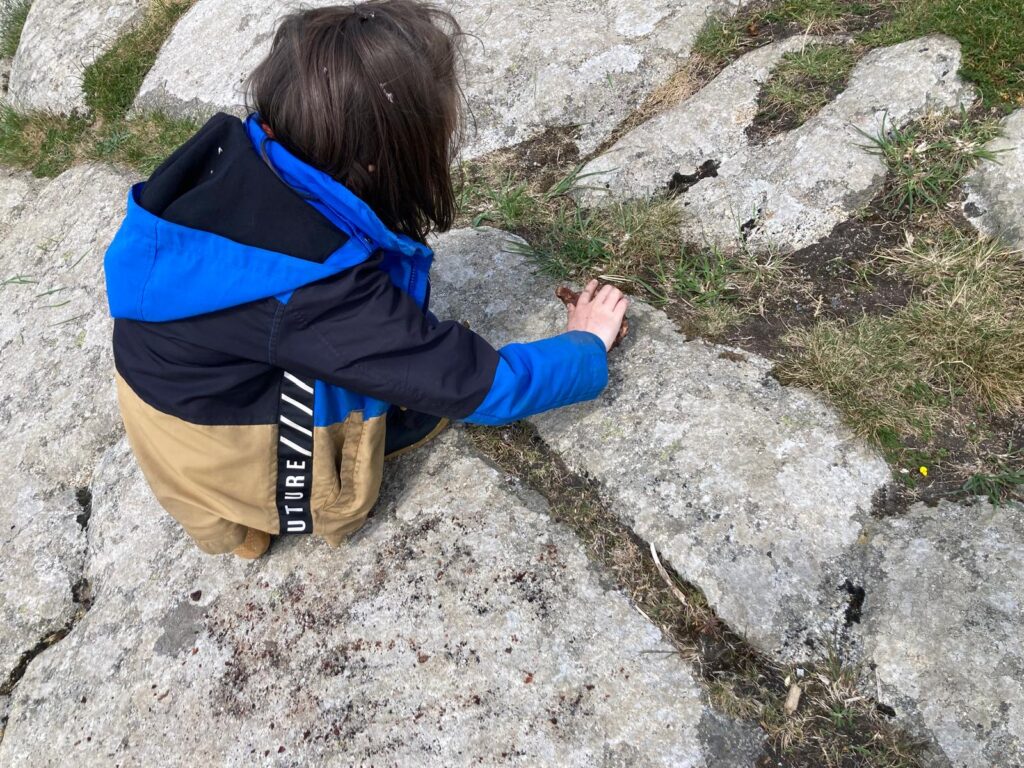
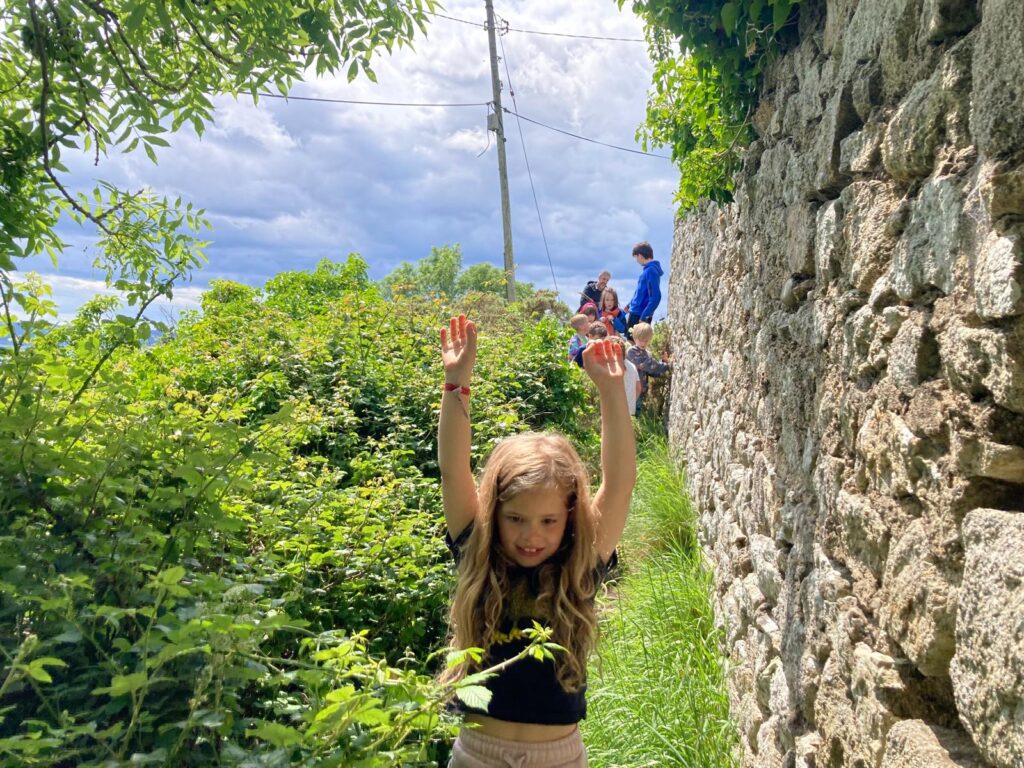
We finished with rose petal tea.
